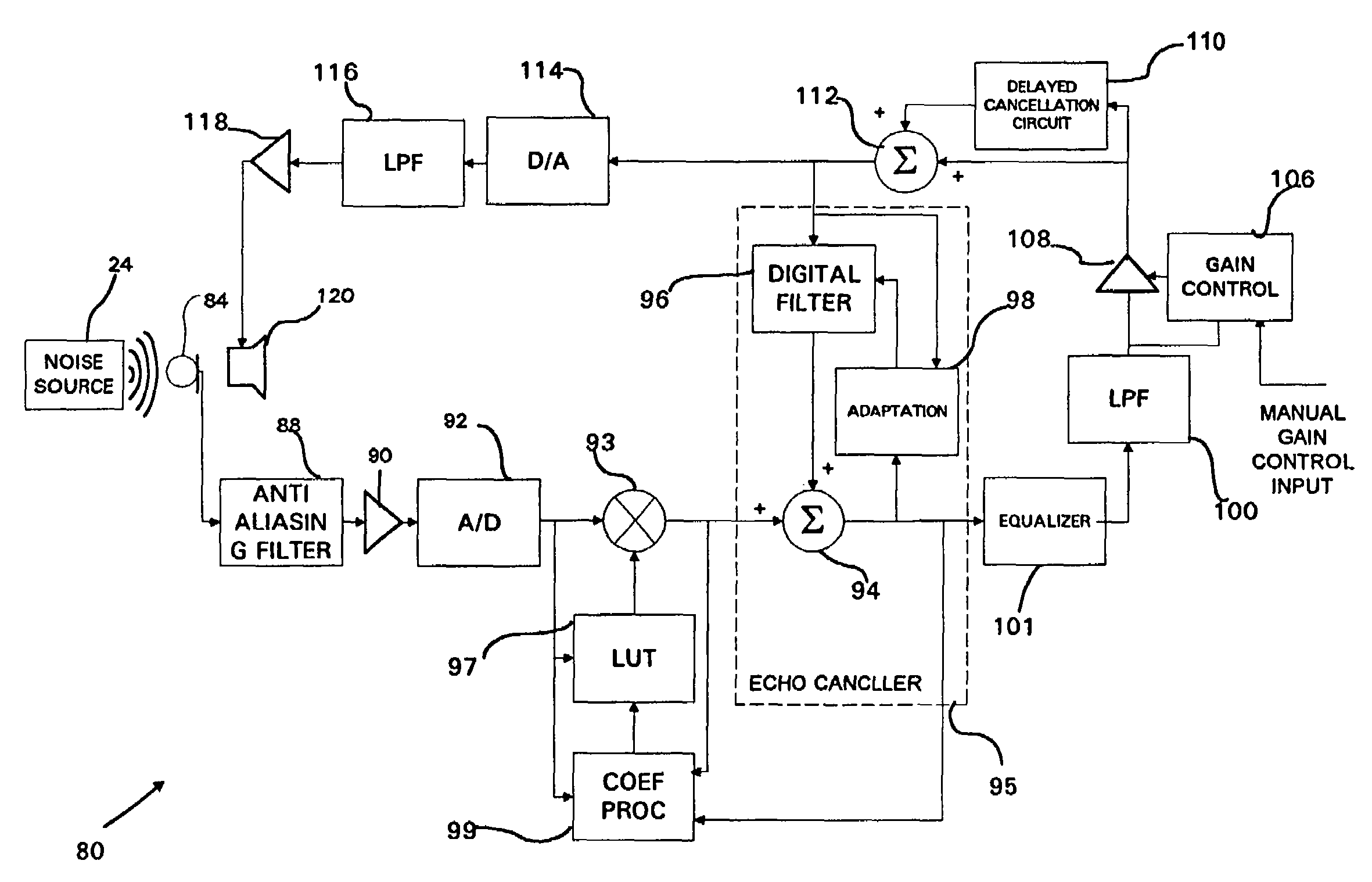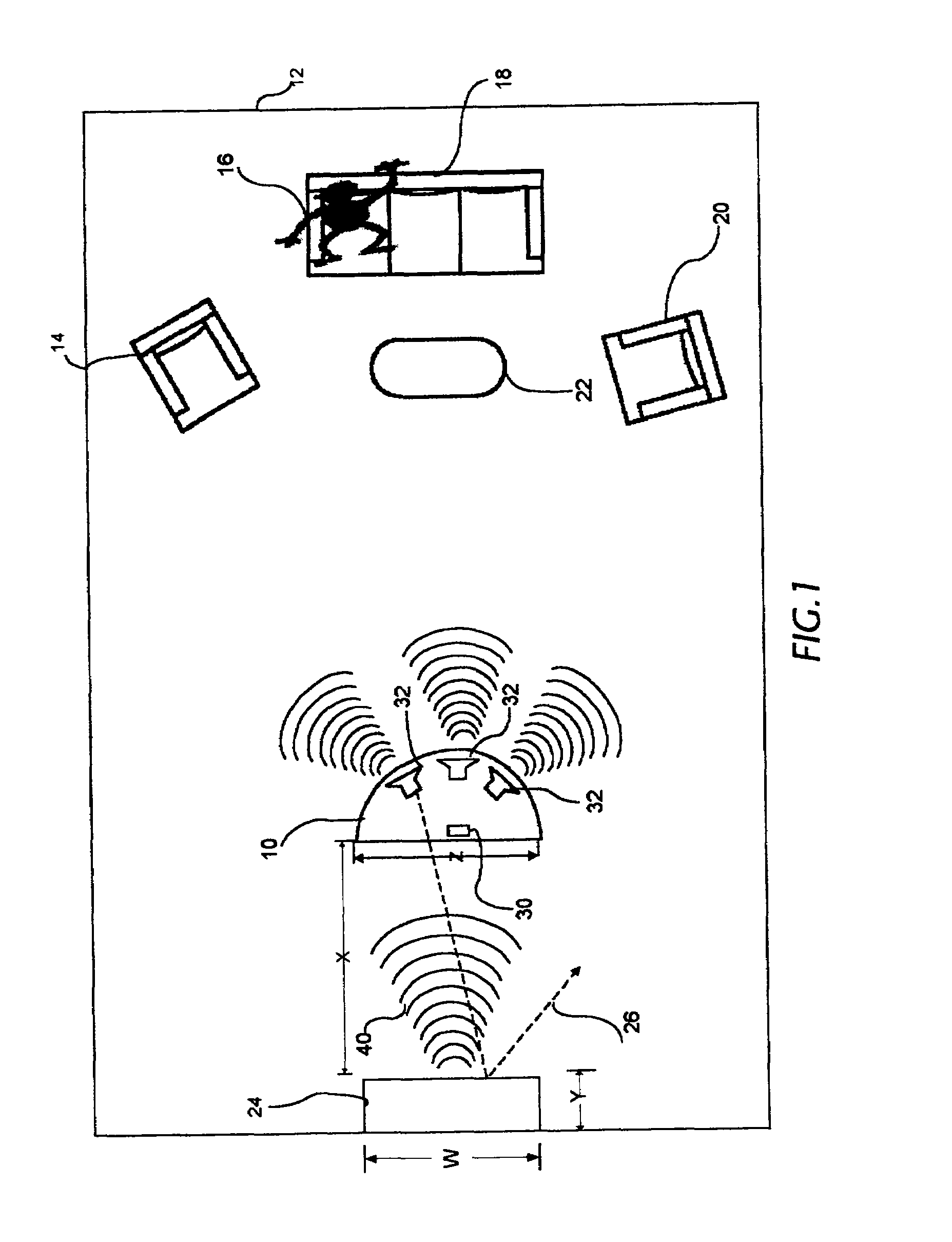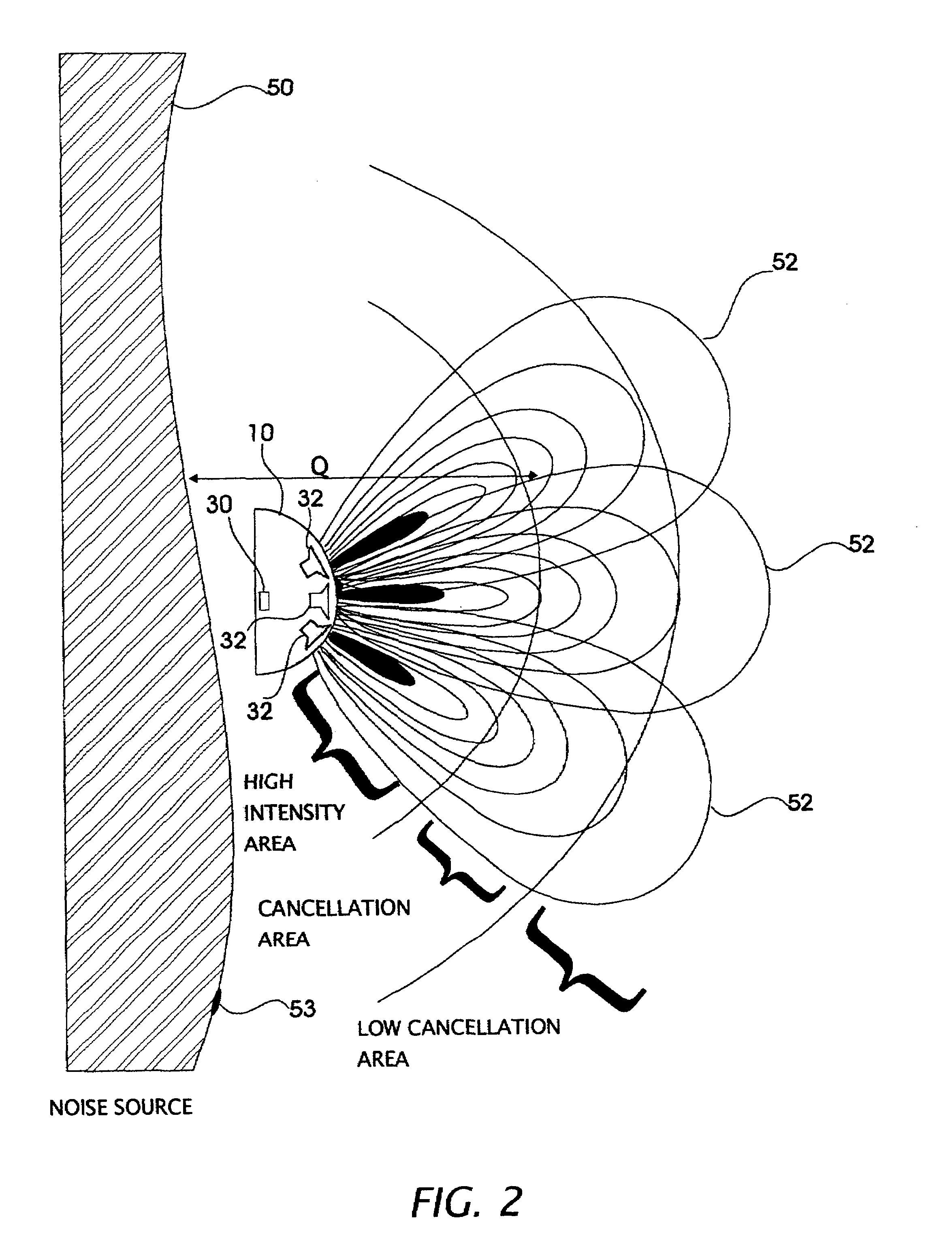Active acoustic noise reduction system
a noise reduction and active technology, applied in the field of noise reduction systems, can solve the problems of large physical dimensions of the cancellation system, large group delay of the system, and high implementation and calibration costs of the noise reduction system made according to the prior art techniques described above, so as to reduce the effect of oscillation, and reduce the effect of echo
- Summary
- Abstract
- Description
- Claims
- Application Information
AI Technical Summary
Benefits of technology
Problems solved by technology
Method used
Image
Examples
first embodiment
[0105]A high level flow diagram illustrating the first calibration method associated with the first embodiment is shown in FIG. 9. The first method of calibration utilizes the fact that the noise is physical and continuous. The controller in the system tracks the relationship between values termed Table Input (TI), Table Output (TO) and Summer Output (SO) during operation of the system. The TI values are measured at the output of the A / D converter 92 (FIG. 4), the TO values are measured at the output of the multiplier 93 and the SO values are measured at the output of the summer 94. The coefficient processor 99 functions to calculate new LUT coefficients based on the TI, TO and SO values.
[0106]The calibration of the LUT coefficients during operation of the system attempts to ignore the effects of the noise source. Note that the input noise source itself changes between two adjacent samples. Note also that the output of the summer SO represents the noise source since the echo cancele...
second embodiment
[0127]A high level flow diagram illustrating the first calibration method associated with the second embodiment is shown in FIG. 12. The first method of calibration utilizes the fact that the noise is physical and continuous. The controller in the system tracks the relationship between values termed Table Input (TI), Table Output (TO) and sigma (Σ) during operation of the system. The TI values are measured at the input to the LUT 184. The TO values are measured at the output of the multiplier 186. The Σ values are generated by the Σ generator 183. The coefficient processor functions to calculate new LUT coefficients based on the TI, TO and Σ values.
[0128]The calibration of the LUT coefficients during operation of the system attempts to ignore the effects of the noise source. Note that the input noise source itself changes between two adjacent samples. The calibration method measures two adjacent TO values at the output of the multiplier 93 (FIG. 11). Subsequently, the controller the...
PUM
 Login to View More
Login to View More Abstract
Description
Claims
Application Information
 Login to View More
Login to View More - R&D
- Intellectual Property
- Life Sciences
- Materials
- Tech Scout
- Unparalleled Data Quality
- Higher Quality Content
- 60% Fewer Hallucinations
Browse by: Latest US Patents, China's latest patents, Technical Efficacy Thesaurus, Application Domain, Technology Topic, Popular Technical Reports.
© 2025 PatSnap. All rights reserved.Legal|Privacy policy|Modern Slavery Act Transparency Statement|Sitemap|About US| Contact US: help@patsnap.com



